It is no secret that Brad Treliving’s top priority for the upcoming offseason is building up Toronto’s defense.
That information has been repeated in countless insider reports and explicitly acknowledged by Treliving himself in his pre-draft media availability:
We have some cap space, but you look at the holes we have to fill, and it goes quickly. We are trying to be as prudent as we can to look at the defense… I wouldn’t say, “Look at it first,” but look at it first before we commit too many cap dollars anywhere else.
Toronto’s defense group has to go up a notch for the team to move past the Florida Panthers in the Eastern Conference, and they have pressing needs in their top four outside of Morgan Rielly and Jake McCabe.
As we did a few days ago with the goaltending situation, today we will walk through the feasible targets and find the best fits for the Maple Leafs. We’ll break it down by role, starting with the expensive, top-pair options before moving to the more moderately priced, second-pair options.
Prime Age, 20+ Minute Studs
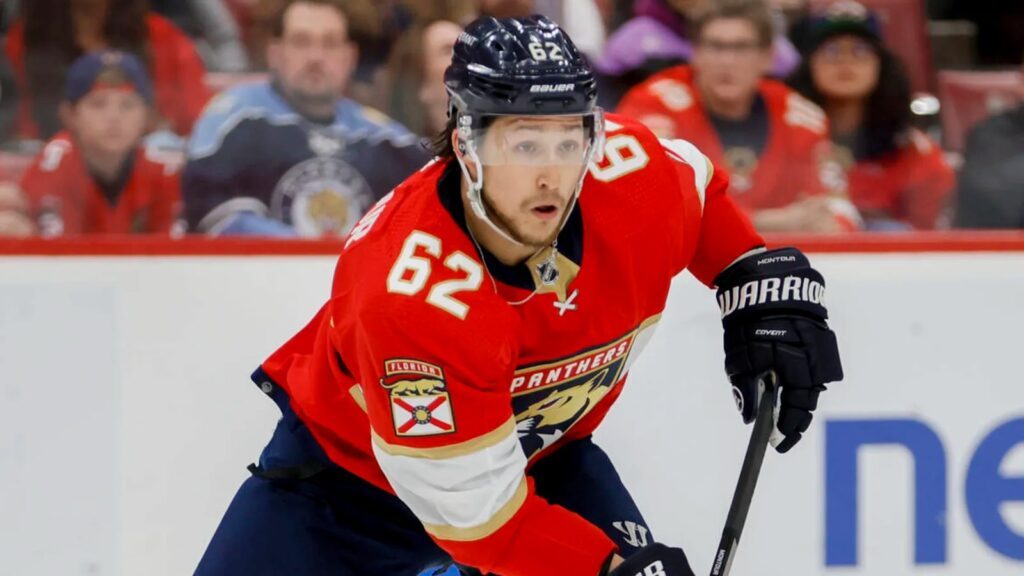
It feels like the Leafs need to come out of the offseason with at least one legitimate top-four option on defense. McCabe and Rielly are fine players with their own strengths and weaknesses, but the drop-off between those two and the rest of the D group was pretty stark last season in a way unbecoming of a true contender, especially one that doesn’t have any Norris-calibre defensemen on the roster.
They might get away with weaker depth outside the top pair if they were rolling out Makar/Toews or Ekholm/Bouchard up top. The Leafs are not; thus, the need emerges to add one bona fide top-four stud to drive play. In 2021-22, the team rolled out Rielly, a good TJ Brodie, and a still-healthy Jake Muzzin as their top three defensemen. That’s what they need to try to recreate this offseason, and it starts by signing someone in this tier.
Brandon Montour, Florida Panthers: One could argue the most logical fit comes from a division rival, Brandon Montour of Florida. If the Panthers keep Sam Reinhart, they will likely not have the cap space to extend Montour as well, sending the talented defender to the open market.
Montour has been a pivotal piece of the Panthers’ success for a few seasons now, playing >23 minutes per night each of the last two years plus 26:58 in the playoffs in 2023 and 22:40 in the playoffs this spring. His 73-point season in 2023 was probably an aberration, but Montour scored 37 and 33 (in 66 games) in his other two years in Florida. Averaging nearly 12 goals per season over the past three years, he’d easily be Toronto’s best goal-scoring defenseman, something they have sorely lacked. Montour has played the point on a successful Florida PP each of the last two seasons as well and could bump Rielly off PP1, something the Leafs have been trying to do for years.
In that way, Montour is a much more serious version of what the Leafs were trying to achieve in signing John Klingberg last year. He’s a right shot, which is a big need, and is a good skater, injecting much-needed rushing ability on the back end as well. The Leafs wanted to sign a mobile, talented offensive defenseman to run the PP from the right side when they inked Klingberg. Montour is a younger and healthier version and is a Brantford native, which is an added bonus.
Montour’s defensive abilities have never been incredible, and he doesn’t kill penalties much (which is a concern), but if we balance out a Montour signing with one of the cheaper, defense-first right shots to play with Rielly, a McCabe/Montour pairing could make a lot of sense and fix the chronic lack of offense from Toronto’s blue line.
Brady Skjei, Carolina Hurricanes: Carolina has two key defensemen up for unrestricted free agency, and it’s unclear if either will return. Skjei, the lone left shot in this category, is seemingly more likely than Brett Pesce to return to Carolina, but as long as he remains unsigned, we will assume that he goes to market.
Skjei is an interesting player, one that I didn’t think too fondly of when he was first traded from New York to Carolina back in 2020, but he has seemed to get better and better every season. Now age 30, the native Minnesotan is likely looking to cash in for what could be the last big contract of his career.
Skjei’s handedness is probably a bit of an issue for the Leafs, although we know Jake McCabe can play the right side. Otherwise, there’s a ton to like here, as Skjei has size at 6’3″ and can also score goals at a very high clip, averaging 13 over the past three seasons. He’s also played some PP time — although not as much as Montour — and he has scored right around 40 points in each of the last three years.
Unlike Montour, Skjei also plays on the penalty kill and is more solid defensively. He’s been a consistent 21-minute-per-night player for Carolina, so it’s hard to have too many complaints here. The biggest worry is probably that Skjei is a product of Carolina’s system or that his production may not translate with worse partners. Again, the fit may not be ideal with his left shot, but it’s hard to argue Skjei wouldn’t make the Toronto blue line better.
Brett Pesce, Carolina Hurricanes: Skjei’s partner in Carolina, Brett Pesce, is the right shot of the tandem, which makes him instantly more attractive to Toronto. He also brings the same size as Skjei at 6’3″, but his career seems to have trended a bit in the opposite direction compared to Skjei.
Where Skjei’s play continues to improve, Pesce has trended down some and scored just 13 points this past season in 70 games after posting 25-30 points in previous years. That, as you’d expect, was related to being bumped off the power play, but his overall impacts have dipped as well, as evidenced in various player cards. Turning 30 in November and having just missed all but two playoff games due to injury (after missing 12 regular season games), the risk is evident.
Of course, there are still reasons to like Pesce. Carolina certainly felt his absence in the playoffs, suggesting that he’s still impacting games in a noticeable way. He also remains a valuable PKer for Carolina, which Toronto could use. At his best, Pesce was a good skating defenseman capable of snapping stretch passes from the back end and roaming in the offensive zone. His shot and goal-scoring prowess have never been as good as Montour’s or Skjei’s, but Pesce was a 22-23 minute per night player on a top-end team who received Norris votes multiple times. That player on the right side would be a major upgrade for the Leafs and incredibly valuable.
It comes down to the Leafs’ pro scouting evaluation of whether or not Pesce’s play has dipped too significantly, how his health will hold up, and how his game will translate outside the confines of Carolina’s system. It’s a bit riskier than I would prefer, but the gamble could be worth it.
Matt Roy, Los Angeles Kings: Roy is not as sexy of a name as the Carolina guys or Brandon Montour, but you can argue that he’s just as good and certainly as strong of a fit as anyone else in this category. Roy took an unconventional path to the NHL, from a seventh-round pick and college hockey career at Michigan Tech to a 21-minute-per-night shutdown defenseman.
Roy’s pair with Vladislav Gavrikov has been one of the best defense-first pairs since the Kings traded for Gavrikov at the 2023 deadline, and Dom Luszczyszyn of The Athletic‘s model rates Matt Roy as the 12th-best defenseman in the NHL based on pure defensive ability. Roy has decent size at 6’1″, is right-handed, and seldom takes penalties, allowing him to be a heavily used and effective PKer. He ticks a ton of boxes for the Leafs.
Of course, signing Roy doesn’t address the Leafs’ offensive needs. He’s scored around 25 points (or an equivalent pace) in each of the last three seasons; I wouldn’t describe him as offensively inept, but he is not someone who is going to take a significant role on the power play or improve offensive creation from the back end. That’s okay because Roy would give the Leafs two premium options to either partner with Morgan Rielly or form a shutdown pair with Jake McCabe.
So long as the Leafs prioritize puck-moving on defense in addition to signing Roy, all of his positive attributes may be too attractive to pass up if he can be had at a reasonable price, especially at only age 29 (March 1995 birthday).
Intriguing Second-Pair Options

Some could say that in a perfect world, Brad Treliving would prefer to sign one player from the previous category and one from this category. That may not be possible for a variety of reasons—e.g., teams with more cap space raising market prices to levels the Leafs can’t afford or Treliving deciding his money is better spent up front. There certainly remains the scenario where Toronto can only add to the top four by signing a player in the category below, so it’s important to get to know these players.
Chris Tanev, Dallas Stars: The one defenseman in the group that we know the Leafs will be interested in is Tanev, whose name has been linked to Toronto since the moment Treliving took over the GM job. It makes sense, as Treliving signed Tanev in Calgary, and his fit with the team is very obvious.
Tanev is an elite defensive defenseman, a right-shot one whose hard-nosed, defensive playing style perfectly complements Morgan Rielly. Tanev played such a role next to Quinn Hughes during the star’s rookie season in Vancouver and could, health-willing, fill that role with great success in Toronto. Tanev made a massive impact in Dallas during the Stars’ playoff run, suppressing chances against and neutering elite opposing players. He’s a great defender, and while he doesn’t add a ton in the way of offense, he’s a very active defenseman who helps his team get the puck out of the defensive zone with possession.
Tanev has played close to 20 minutes per night every season since 2014, so why is he in this category? His age. His calibre of play in the present means he’s every bit as good as the players in the previous category, but at 34, he’s not “prime age” as the category specified. The projection—and the contract details—are going to be different.
Montour, Skjei, Pesce, and Roy will likely receive six or seven years at a $6-8 million AAV. Tanev is likely looking more in the four-year range and probably more like $5 million per season. Moreover, while you expect to get more prime years out of the players in the previous category, the reality of Tanev’s age and style of play means that he could rapidly decline at any moment. The Leafs saw that very thing happen to Jake Muzzin and TJ Brodie, both of whom were younger then than Tanev is now.
It feels like many in the hockey world have been predicting Tanev’s imminent decline since he signed his last deal in Calgary four whole years ago. It still has yet to happen, but the recent past doesn’t necessarily predict the future. There’s risk involved for Toronto, particularly for a player with some real injury history.
On the flip side, you could argue that the injury history lowers the risk because if Tanev declines, he is far more likely to “LTIRertire” the way Muzzin did rather than play out his contract as an increasingly useless defender (a la Brodie). If Tanev were 30, this would be a no-brainer. At 34, it’s risky, but if Tanev wants to return home to Toronto, the appeal of the fit may be too much to pass up.
Sean Walker, Colorado Avalanche: Another right-shot defenseman, Sean Walker enjoyed a breakout season this year in Philadelphia after he was cap-dumped in the summer of 2023 by Los Angeles. The Flyers took Walker, who was scratched by the Kings during their previous playoffs and was struggling to find opportunity above the third pair, and rebuilt him into a 19.5-minute-per-night player.
On a pair with Nick Seeler, Walker dazzled and turned into an asset so valuable that he returned a first-round pick from Colorado at the deadline. His smooth skating abilities that translate into a stellar rushing defenseman seemed to be a good fit for the Avs, who slotted Walker onto their third pair, but Walker struggled in that capacity. How much of that was Walker, and how much of it was playing next to Jack Johnson, an aging veteran who has been one of the worst-graded defenders in the NHL across various analytical models for years now?
It’s hard to say, and that’s the challenge for Brad Treliving to assess. Walker turns 30 in November, so he’s the same age as many of the options in this piece, but he’s played only 313 NHL games, so there’s less to go off of, too. There’s only 3/4ths of one season where Walker has played like a true top-four defender on a playoff team, and he has a history of a severe knee injury that wiped out nearly his entire 2021-22 season. There’s a significant risk, although the cost also shouldn’t be crazy high.
His fit with Toronto is also not as clear. While his offensive abilities and skating would be needed assets on the back end, Walker doesn’t have much PP experience. He does kill penalties but isn’t regarded as the best defensive defenseman. At 5’11”, he’s not what Treliving tends to target size-wise, either. I’m not sure Walker makes the most sense for Toronto, but his handedness and some of his tools mean we can’t rule him out, either.
Nikita Zadorov, Vancouver Canucks: Another defenseman with Treliving connections, Zadorov played on the Calgary Flames with Tanev before he was also traded away from Alberta last season, with Zadorov landing in Vancouver.
With the Canucks, the big Russian slowly transformed into a cult hero as he took his game to another level in the postseason. Zadorov played over 20 minutes per night, far more than the 17 per night he was playing in the regular season, and scored 4-4-8 in 13 games for the Canucks. His underlying numbers were alright (despite lugging around a struggling Ian Cole), and suddenly, there were glimmers of a legitimate top-four defender in what has been a mostly third-pair player throughout his career.
Zadorov is an attractive player because he’s a 6’6″ defenseman who can move around and handle the puck enough not to be a total nonfactor offensively while adding tons of bite and physicality in his own end. That package saw him picked in the first round back in 2013, but struggles with inconsistency have seen Zadorov bounce around from Buffalo to Colorado to Chicago to Calgary to Vancouver. Zadorov will now be looking for a forever home of sorts, likely on a four-to-six-year contract that will be the last significant deal of the 29-year-old’s career, riding the highs of his playoff goals and thundering hits. Everyone has said, “This is the type of defenseman who gets overpaid,” so should the Leafs stay away entirely?
I would say “probably” because Zadorov is left-handed, and that’s not where the Leafs’ biggest need lies. If he were a right shot, there’s a legitimately interesting profile here. Zadorov has a lot of tools to work with, and his play in Calgary with MacKenzie Weegar in 2022-23 was excellent (in addition to the ’24 playoffs). With the right partner, Zadorov could continue to mature and grow while injecting needed size, physicality, and energy into the Leafs’ locker room.
Again, do the Leafs have that partner? It would probably have to be Jake McCabe on his off-side. Otherwise, Zadorov would be playing on the third pair while he’s paid at a rate far above that station (as high as $5-6 million, possibly). I’m not sure the fit is totally there, but Zadorov is a fascinating player who shouldn’t be completely disregarded as a gross overpay.
Alex Carrier, Nashville Predators: Carrier’s name was discussed as a possible fit for the Leafs by authors of this site on the MLHS Podcast back at trade deadline time, but he didn’t end up moving. The Predators hung onto him and were vindicated by making the playoffs, where they were defeated by Zadorov’s Canucks.
Carrier played a respectable 18:48 per night this past season, grading out very well in the territorial battle and shouldering a significant load on the right side opposite Jeremy Lauzon on the second pair. Those two soaked up tough defensive matchups, and Carrier played significant time on the PK, which freed up more opportunities for Roman Josi to do his thing offensively. At just 27 (Carrier turns 28 in October), he’s the youngest defenseman in this article and doesn’t figure to break the bank.
In that way, Carrier may well be the most underrated defensive target of the offseason, not just for the Maple Leafs but for any team. Yes, Carrier is only 5’11” and has a rather slight frame, and yes, he doesn’t add a ton offensively (10 career goals in 217 games). Yes, he has a relatively short track record, having played >20 games in just three seasons. But this is a right-handed defenseman still in his 20s who played tough minutes for a playoff team and won them during the regular season. That’s very valuable, and if Carrier is overlooked because of his lack of size, there’s the possibility a team could swoop in and be very happy with the results.
Carrier’s lack of offense doesn’t fit all of the Leafs’ needs, but he is a legitimate second-pair defenseman who plays on their barren right side and can kill penalties. Toronto also has to manage the cap very carefully, and Carrier isn’t likely to break the bank. Those factors combine to make him a very attractive fit, especially if the Leafs strike out with the big-money defenders or are too spooked by Tanev’s age. Carrier isn’t a premier player, but he would help the team and could likely play next to Morgan Rielly. That’s enough to drive interest from Toronto.
The Last Word
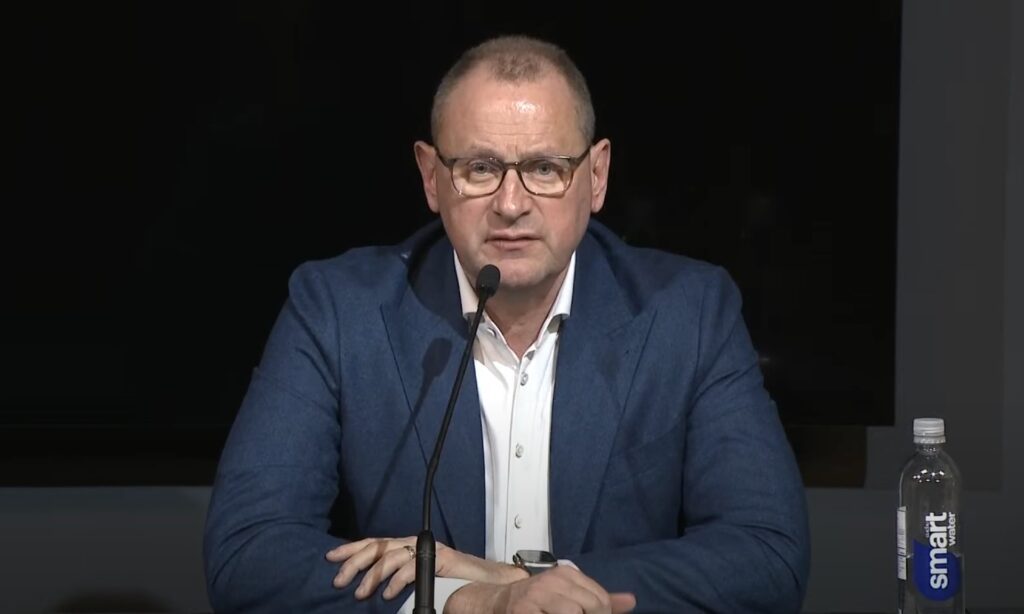
The Toronto Maple Leafs face a crucial next five or so days leading up to unrestricted free agency. Treliving has an opportunity to rebuild the team’s ailing blue line, which has been depleted by the age-related decline of multiple key players. They have a decent chunk of cap space — a rather large number for a playoff team — and the crop of free-agent defensemen is much better than in previous years.
While this article does not discuss every free-agent defenseman, it does touch the ones I consider legitimate top-four options. In my view, it is in the best interest of the Leafs to find a way to sign at least one of these players. Again, the perfect world is signing one from the first category and one from the second category, but that may not be feasible. But it would be a bitter pill to swallow if Treliving cannot secure one of the eight listed here despite $18.8 million in cap space and a huge need at the position.
Perhaps the most likely option is to sign one of the eight above and then sign a third-pairing defender to place next to Timothy Liljegren. In this scenario, they sign a partner for Rielly, leave Simon Benoit/Jake McCabe together, and add a third pairing option. That could be a veteran like Oliver Ekman-Larsson or Dmitry Kulikov, who had solid seasons on the third pair for a good Florida team. Maybe it could be a reclamation project like Matt Grzelcyk, who has fallen on hard times since he was the once-dependable top pair partner for Charlie McAvoy. Or maybe it’s bringing back Joel Edmundson or Ilya Lyubushkin, who both showcased different positive attributes in Toronto this season.
Whichever way Treliving goes with it, he needs to nail the defense portion of this offseason. They have the need, they have the space, and there are options available. It could be pricey, but the Leafs cannot afford to sit on their hands, get sticker shock-shy, and miss out on good players when the clock is ticking on the contention window of the core. Last season’s defensive group was not good enough, and this could be one of the last best chances for the management group to improve the defense during the window of Auston Matthews’ extension.


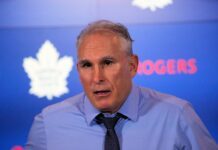










![John Gruden after the Leafs prospects’ 4-1 win over Montreal: “[Vyacheslav Peksa] looked really comfortable in the net… We wouldn’t have won without him” John Gruden, head coach of the Toronto Marlies](https://mapleleafshotstove.com/wp-content/uploads/2025/09/gruden-post-game-sep-14-218x150.jpg)







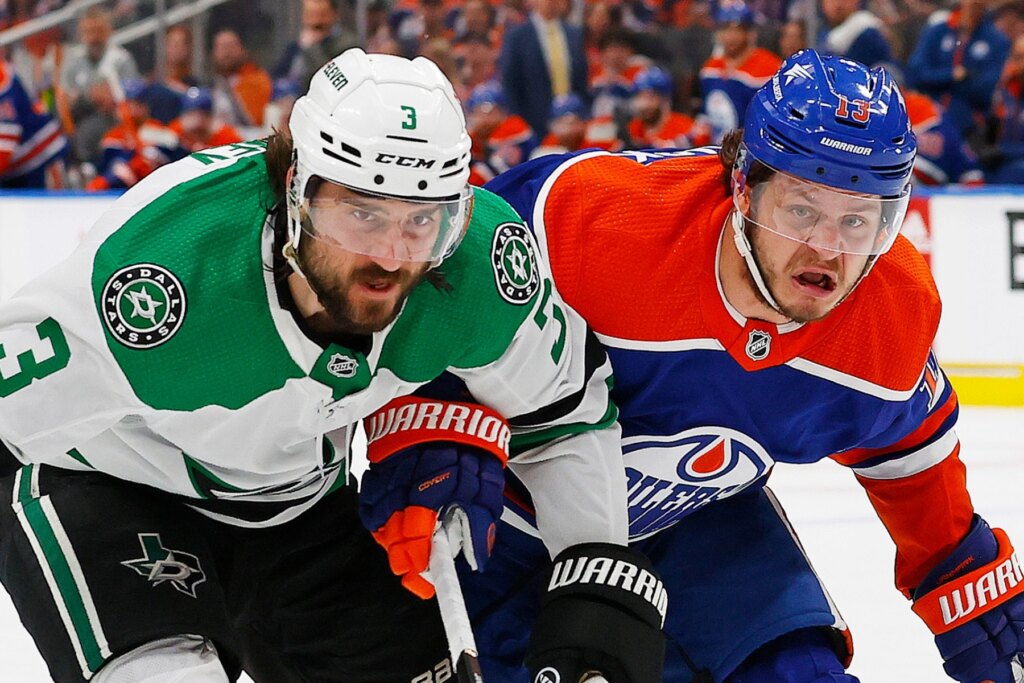
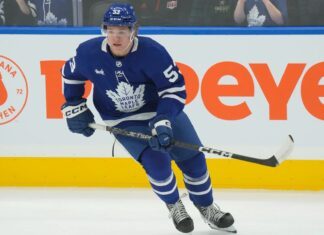
![John Gruden after the Leafs prospects’ 4-1 win over Montreal: “[Vyacheslav Peksa] looked really comfortable in the net… We wouldn’t have won without him” John Gruden, head coach of the Toronto Marlies](https://mapleleafshotstove.com/wp-content/uploads/2025/09/gruden-post-game-sep-14-100x70.jpg)







